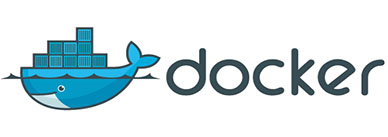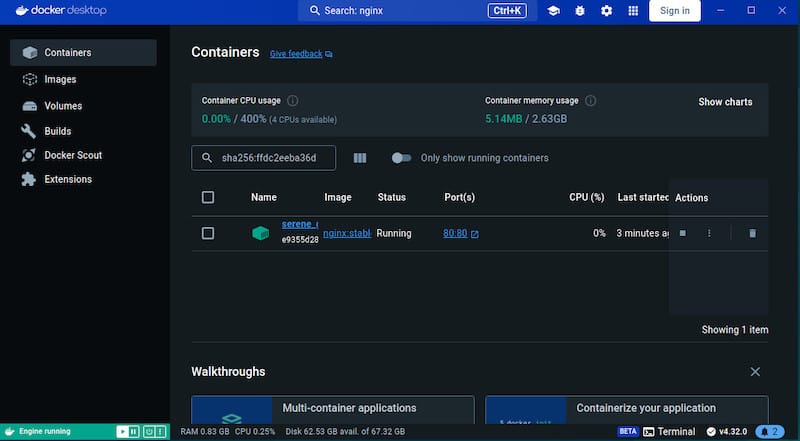How To Install Docker Desktop on Fedora 41

Docker has revolutionized the way developers build, ship, and run applications by enabling containerization. With Docker Desktop, developers can easily manage containers through a user-friendly graphical interface while still leveraging the powerful features of Docker Engine. If you’re running Fedora 41, this guide will walk you through the process of installing and configuring Docker Desktop step by step.
Prerequisites and System Requirements
Before diving into the installation process, ensure your system meets the following requirements:
- 64-bit CPU with virtualization support (Intel VT-x or AMD-V).
- At least 4 GB of RAM.
- KVM virtualization support enabled in BIOS/UEFI.
- QEMU version 5.2 or newer.
- A desktop environment such as GNOME or KDE.
If you’re unsure whether virtualization is enabled on your machine, you can check it with the following command:
egrep -q 'vmx|svm' /proc/cpuinfo && echo "Virtualization is enabled" || echo "Virtualization is not enabled"Additionally, it is recommended to update your system to the latest version before proceeding:
sudo dnf update -yUninstall Older Versions of Docker (If Applicable)
If you have an older version of Docker installed on your system, it’s important to remove it before installing Docker Desktop. This ensures there are no conflicts during installation.
You can uninstall older versions of Docker using the following command:
sudo dnf remove docker docker-client docker-client-latest docker-common docker-latest docker-latest-logrotate docker-logrotate docker-engineInstalling Docker Engine
The first step in setting up Docker Desktop is installing the core component: Docker Engine. This engine allows you to create and manage containers directly from your terminal.
Add the Official Docker Repository
To install Docker Engine on Fedora 41, you need to add the official Docker repository to your system:
sudo dnf install dnf-plugins-core
sudo dnf config-manager --add-repo https://download.docker.com/linux/fedora/docker-ce.repoInstall Docker Engine and Dependencies
Once the repository is added, install Docker Engine along with its command-line interface (CLI) and containerd:
sudo dnf install docker-ce docker-ce-cli containerd.ioStart and Enable the Docker Service
After installation, start the Docker service and enable it to automatically start at boot:
sudo systemctl start docker
sudo systemctl enable dockerVerify Installation
You can verify that Docker Engine is installed correctly by running a test container:
sudo docker run hello-worldIf everything is set up correctly, you should see a message indicating that the test container ran successfully.
Installing Docker Desktop on Fedora 41
The next step is to install Docker Desktop, which provides a graphical interface for managing containers and images. Follow these steps to get it up and running:
Download the RPM Package for Fedora 41
You can download the latest version of Docker Desktop from the official website. Navigate to the Docker Desktop for Linux page, select Fedora as your distribution, and download the RPM package.
Install Docker Desktop Using DNF
Once downloaded, use the following command to install the RPM package:
sudo dnf install ./Downloads/docker-desktop-x86_64.rpmPost-Installation Setup
After installation, launch Docker Desktop either from your application launcher or by running this command in your terminal:
systemctl --user start docker-desktopThe first time you launch Docker Desktop, you’ll be prompted to accept terms and conditions. Once accepted, you can start using all features of Docker Desktop.
Configuring Docker Desktop Settings
Docker Desktop for Linux, including Fedora 41, offers various configuration options to optimize performance and usability.
Tweak Startup Settings
You can configure Docker Desktop to start automatically when you log in. To do this:
- Select “Settings” from the menu in Docker Desktop.
- Navigate to “General” -> “Startup” options.
- Select “Start Docker Desktop when you log in.”
Tuning Resource Allocation (CPU & Memory)
If you’re working with resource-intensive applications or multiple containers simultaneously, it’s essential to allocate sufficient resources like CPU cores and memory. You can adjust these settings under “Resources” in the settings panel.
Running Your First Container with Docker Desktop
Dive right into using containers with a simple test. You can run a container directly from either the graphical interface or terminal. Here’s an example using a terminal command:
docker run hello-worldThis command will pull a small test image from Docker Hub and run it as a container. If successful, you’ll see a message confirming that everything is working correctly.

Managing Containers with Docker Desktop’s Interface
The graphical interface provided by Docker Desktop on Fedora 41 makes managing containers easier than ever before. Here are some key features:
- Create Containers: Easily create new containers from images available in your local repository or from public registries like Docker Hub.
- Status Monitoring: View logs, resource usage statistics (CPU/memory), and other real-time metrics for each running container.
- Easily Stop/Start Containers: Manage container lifecycles by starting/stopping/pausing them with just a few clicks.
- Docker Compose Integration: Use `docker-compose` for multi-container applications directly within the GUI for seamless orchestration.
Updating and Upgrading Docker Desktop on Fedora 41
Docker frequently releases updates that include new features and security patches. Keeping your installation up-to-date is crucial for stability and security.
Manual Update Process Using DNF
If an update is available for Docker Desktop, download the latest RPM package from their website and use this command to update your installation:
sudo dnf install ./docker-desktop-x86_64.rpmUser Interface Notifications for Updates
The good news is that you’ll be notified within the UI whenever a new version of Docker Desktop becomes available. Simply follow on-screen prompts to update seamlessly.
Congratulations! You have successfully installed Docker Desktop. Thanks for using this tutorial to install the latest version of Docker Desktop on Fedora 41. For additional help or useful information, we recommend you check the official Docker website.